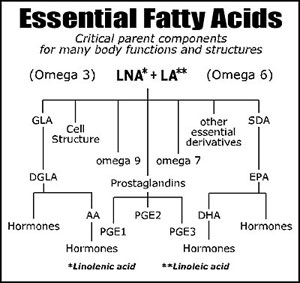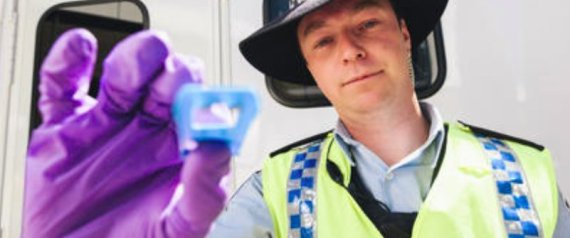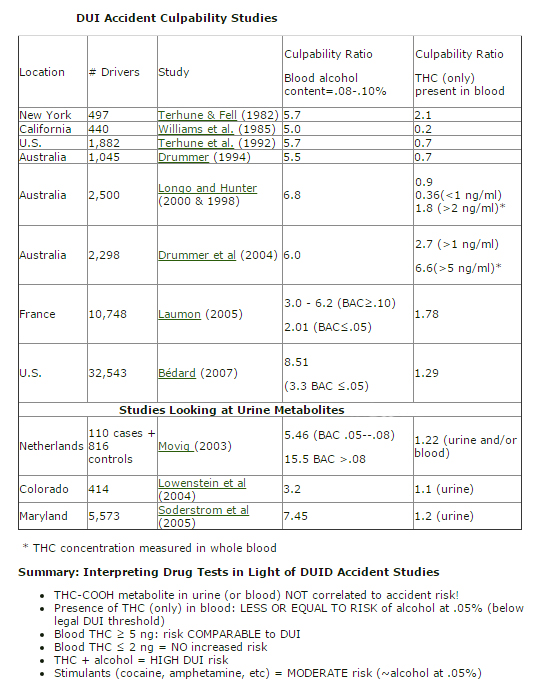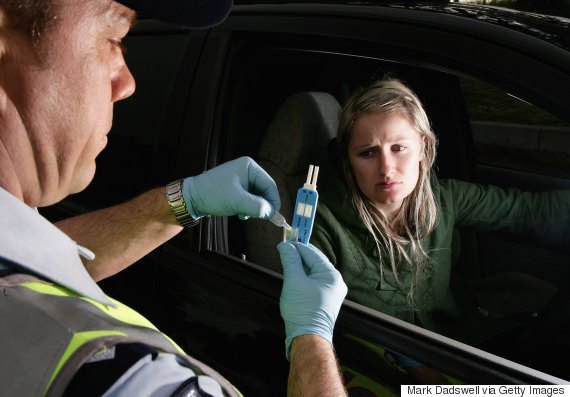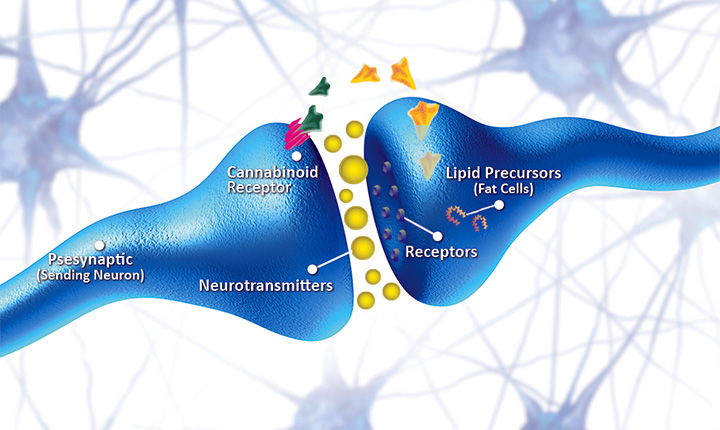How The Science of the 'EndoCannabinoid System'
Will Change the Practice of Medicine and the Economy
My name is David B. Allen M.D., an American Board certified Cardiothoracic and Vascular Surgeon and have board certification in General Surgery. I am a member of the International Cannabinoid Research Society (ICRS) a non-political, non-religious organisation dedicated to scientific research in all fields of the cannabinoids, ranging from biochemical, chemical and physiological studies of the endogenous cannabinoid system to studies of the abuse potential of recreational Cannabis and consider myself a professor and research scientist of the Endocannabinoid Signalling System (ECS), I have been asked to give a summary of the medical and social effects of Cannabis and the current status of this 'new' science.
The discovery of the ECS is the most significant advancement of medicine and will save more lives than any other discovery including the discovery and application of sterile surgical technique. The ECS is a combination of cell membrane receptors that cause physiologic changes when endogenous cannabinoids (endocannabinoids) bind to the receptors. What this entails is: your body makes chemicals (endogenous cannabinoids or endocannabinoids) that bind to specific receptors and regulate metabolism, the immune system, cell division and differentiation.
 |
Links to references above, at end of article
|
This is the discovery of a communication system that all cells have, that lets them sense their environment and manipulate the metabolism to maintain a steady state of life called homoeostasis. Homoeostasis is the ability to adjust metabolism in order for the species to survive hostile environments.
Homoeostasis is adaptability: A rule of nature; “If you can’t adapt you die”.
The Cannabinoid receptors, CB-1 and CB-2, are protein chains that pierce the cell membrane seven times and have portions of the receptor both inside and outside the cell membrane. These protein receptors are not visible with conventional microscopy and this fact delayed knowledge of their existence. The external portion of this protein has a specific shape and electrostatic charge that matches the corresponding shapes and charge of the cannabinoid molecules. This matching causes a strong attraction and binding of the Endocannabinoid to the protein receptor.
CB-1 receptors control glucose metabolism and CB-2 receptors control fatty metabolism. There is also some cross control. Glucose metabolism produces a lot of energy quickly, but also produces exhaust in the form of oxygen free radicals. Fatty metabolism produces even more energy, but does it more slowly, and produces oxygen free radicals at a lower rate. The ability to change what you metabolise allows you to survive when food source is scant.
By altering the concentration of cannabinoid receptor types you can change what the cell burns and change its production of exhaust. By changing this rate you can change the longevity of the cell or organism. This, in effect, is what Juan Ponce De Leon was searching for, the 'fountain of youth'. "When you burn the candle slower it lasts longer".
In 1512, Spanish King Ferdinand encouraged the explorer, Ponce de León, to continue searching for new lands, in hopes of finding more gold and expanding the Spanish empire. Around this time, Ponce de León learned of a Caribbean island called Bimini on which it was rumoured there were miraculous waters purported to be a “fountain of youth”. The fable was familiar on both sides of the Atlantic, alleging the spring was in the Garden of Eden, which many believed was located in Asia (early Spaniards believed America to be Asia).
There is good evidence that hibernation may indeed be a result of changing the food source from glucose metabolism to fatty metabolism during winter torpor. This change can only occur by manipulation of the regulatory mechanism of these two metabolic pathways. Down-regulation of body temperature, heart rate and respiratory rate dramatically decreases metabolism and allows an animal to survive without eating, drinking, urinating or defecating for very long periods.
Cells have similar survival issues. The toxic products (oxygen free radicals) of metabolism can injure DNA and this is the reason why eukaryotic cells have nuclear membranes to separate the DNA from damage caused by metabolic by-products.
Stem cells are totipotent cells that can develop into any of the cells of the organism. Their only job is to divide and make more stem cells, or divide into one of the three germ cell layers: Ectoderm outside; Mesoderm, middle layer; and Endoderm, inside cells.
When the cells develop into one of the three germ cell layers, they have different metabolic requirements and different susceptibility to the toxicity of oxygen free radicals. By changing what substance to burn the cells can be directed to differentiate into specialised cells, such as brain, muscle, bone, or intestinal cells. As discussed in the study, 'Expression and function of cannabinoid receptors CB1 and CB2 and their cognate cannabinoid ligands in murine embryonic stem cells'.
Your health is entirely dependent on the functioning of your ECS. If you have good health you have a well functioning ECS and if your health is diseased you have a diseased ECS. This is why Cannabis works for so many diseases. Many diseases we now have names for will be renamed when the enzyme defect in the patients’ ECS is identified.
The process of conception does not occur without a functioning ECS. The ECS is the control mechanism for metabolism and as such is the ultimate master control system. Therefore the ECS is the key to life.
Scientists were not aware of the mechanism of action of aspirin for a very long time. It was finally recognised that aspirin works by inhibiting fatty acid amide hydrolase or FAAH. This is the enzyme your body makes to degrade your endocannabinoids. When this enzyme is inhibited, less endocannabinoids are degraded and levels increase, providing analgesia. Aspirin works by increasing your own endocannabinoids.
The safety in manipulating the ECS lies largely in the fact that the brain stem has minimal numbers of CB-1 receptors; depression of the brain stem control of heart rate and respiration is not produced by cannabinoid stimulation. Opiates and barbiturates, by contrast, kill by depressing the brain stem control of these vital functions. This deadly situation is never encountered when using Cannabis and this fact accounts for its unprecedented safety over virtually all substances and medications. The LD-50 or lethal dose for 50% of subjects given any drug or substance, is a standard of safety or danger to the subject. Substances producing death at low concentrations are the most dangerous. No medication or substance on earth has a lower LD-50 than Cannabis, including table salt and water.
Cannabis use is not associated with any major organ failure or dysfunction, and in fact results in the protection of all organs. Even pulmonary function is not degraded with chronic Cannabis use. Donald Tashkin’s study, 'Effects of Marijuana Smoking on the Lung', published in the Annals of the American Thoracic Society, demonstrated a 150cc improvement in forced vital capacity (FVC) of patients who had used Cannabis for over 20 years, over non-smokers. Only mild bronchitis is known to be associated with Cannabis smoking and that condition reverses with cessation of smoking.

In the near future you will be hard pressed to find any items that do not have Cannabis in them. The oils can be used for fuel, food, cosmetics, paint and frankly too many items to name. The fibre will be used in clothing and building products like hemp concrete (hempcrete), rope and plastic (Hemp Information). The Cannabis flower will be used unheated in food as a staple and daily nutritional requirement and properly classified as a nutraceutical.
One of the most amazing unknown facts about Cannabis, hidden from the general public, is that if you eat Cannabis that is unheated or raw it does not get you high. There is no euphoria. The reason for this is that the Cannabis plant does not produce THC! Cannabis produces all of the cannabinoids as acid forms of the chemicals, which means they have a carbon dioxide attached to the cannabinoids. This is termed the carboxylated or acid forms of cannabinoids. When you heat Cannabis it releases a CO2 molecule and the cannabinoid becomes decarboxylated or neutral.
THC (the decarboxylated or PH neutral form) binds onto the CB-1 receptors whereas THC-A (the un-decarboxylated form) does not bind to receptors. Raw unheated cannabis has un-decarboxylated cannabinoids that do not bind to cannabinoid receptors, and thus do not cause euphoria or the high.
Although Cannabis tastes bad if you eat it raw, it has amazing protective effects, and this fact makes Cannabis a preventive medical treatment. The fact that Cannabis has a very bad flavour will prevent children from eating it, and if they did it would not get them high, or euphoric. This fact makes raw Cannabis safe around children.
Cannabis that is eaten raw and unheated results in a lower incidence of diabetes and all of the consequences of the disease. Long-term Cannabis use is associated with 66% less incidence of Diabetes as evidenced in the study, 'Decreased prevalence of diabetes in marijuana users: cross-sectional data from the National Health and Nutrition Examination survey (NHANES)' in October 2011 and a patent originally taken out in February 2005 by The Hebrew University of Jerusalem, 'Treatment or preventing diabetes with Cannabidiol; Us Patent' which is still current.
Can you imagine the impact of decreasing the incidence of all complications of diabetes by this amount? There would be 66% less amputations, less blindness, less renal failure, less dialysis and less diabetic testing equipment. Children would be able to eat Cannabis raw and unheated to decrease the symptoms of ADHD. Currently the medical system uses amphetamines to treat ADHD, so the advantage of Cannabis therapy is clear.
Grandma will be able to eat raw Cannabis to decrease the size and severity of a stroke by 50% (US patent 6,630,507 'Cannabinoids as antioxidants and neuroprotectants'). Heart attack victims may see even better reduction of myocardial infarction by as much as 66% by use of CBD (study,'Cannabidiol, a non-psychoactive Cannabis constituent, protects against myocardial ischemic reperfusion injury'). Patients with a history of heart attack or stroke will carry CBD capsules in their pockets to prevent or lessen the severity of these diseases. Insurance companies will pay for this like they do for nitroglycerine tablets.
Cannabis is a new class of antibiotic (A Structure−Activity Study, 'Antibacterial Cannabinoids from Cannabis sativa'). Almost all classes of bacteria are sensitive to cannabinoids and even MRSA resistant bacteria are killed by cannabinoids. The germicidal mechanism of action of Cannabis is different from the mechanism of action of any other antibiotic such as Penicillin, Sulphur, Tetracycline, Cephalosporin or Quinolones like Cipro, or Levoquin. Antibiotics work by inhibiting many of the vital functions of bacteria. This work includes inhibiting DNA synthesis, RNA synthesis, Protein Synthesis, and Cell Wall Synthesis. The exact mechanism of germicidal action of cannabinoids is not known, and may be due to changes in altering glucose metabolism.
The implications of the cannabinoid germicidal effect are tremendous and can be applied to any situation where bacteria exist. Surgical drapes impregnated with cannabinoids, burn wounds treated with Cannabis oil that provide occlusive dressings, mouthwash for sore throats, vaginal douche, ointments, creams are all possible.
The major issue with Cannabis that has limited its medical use is that the oil is not soluble in water. This makes Cannabis oil unusable for intravenous injections. The US government has a patent on making water-soluble compounds of cannabinoids by forming esters that are water-soluble (2006 study, 'Pharmacological Characterization of Novel Water-Soluble Cannabinoids, Water soluble derivatives of cannabinoids', US patent 5847128). The future of emergency medical care is in IV solutions of cannabinoid compounds that can be delivered in the field by the intravenous route or in the operating surgical suite. All cardiac surgeries will use water-soluble cannabinoid compounds to limit reperfusion injury and strokes during surgery.
Currently there is a large body of evidence to show that the ECS controls cell differentiation of stem cells (2007 study, 'Expression and function of cannabinoid receptors CB1 and CB2 and their cognate cannabinoid ligands in murine embryonic stem cells'). The implications of this evidence are that one might replace body parts and organs through control of stem cell differentiation. Immortality lies in this science!
Manipulating body metabolism can develop into prolonging life and placing us in suspended animation or hibernation. Some animals have daily torpor and save energy and prolong their life by reducing their metabolism and conserving energy every night. Hummingbirds are an example. There have been reports of short periods of human hibernation with reduced body temperatures and metabolism. By reduction of metabolic rate, we can extend life. Again, immortality lies in this science.
Cannabis use is associated with a 9% incidence of 'dependent type' activity, less than coffee and far less than alcohol, tobacco or drugs like cocaine and heroin. The definition of “dependent activity” is ethereal and can even be applied to drinking water and breathing oxygen. Can you be dependent on a substance your body needs to maintain homoeostasis? This is a flawed thought process without understanding of the science.
Decriminalisation causes the illegal activity that was once attractive and appealing to be ordinary and boring. Rates for teenage use of Cannabis in Amsterdam are well below rates of those in the United States as evidenced in the study, 'Prevalence of substance use in the Netherlands compared with the United States'.
When Cannabis is legalised and made available to the public two things happen:
1) Traffic deaths go down; and,
2) Beer sales go down! A November 2011 report, 'Medical Marijuana** Laws, Traffic Fatalities, and Alcohol Consumption', used US' state-level data to examine the relationship between medical Cannabis laws
and a variety of outcomes. Legalisation of medical Cannabis is associated with increased
use among adults, but not among minors. In addition, legalisation is associated
with a nearly 9% decrease in traffic fatalities, likely due to its impact on alcohol
consumption.
Evidence from simulator and driving course studies provides a simple explanation for
why substituting Cannabis for alcohol may lead to fewer traffic fatalities. Studies show alcohol consumption leads to an increased risk of collision. Even at low doses, drivers under the influence of alcohol tend to underestimate the
degree to which they are impaired, drive at faster speeds and take more risks.
When the true nature of the nutraceutical effects of Cannabis are more widely known, most all humans and animals will use it daily to prevent disease and consumption of Cannabis will increase dramatically.
The question, "Is Cannabis use the preamble to the consumption of other addictive substances?" is based on the assumption that Cannabis has mechanisms of action that are similar to other addictive substances. As such it is not based on the science of the ECS.
What are the success stories and failures at the international level in the regulation of Cannabis for medical and / or recreational use? Regulation is about jail sentences and fines for growing a plant that cures everything and prevents you from spending your life savings on pharmaceuticals that don’t work and endanger you. You should not tax medicine or nutraceuticals.
The NIH produced a paper entitled: 'Sex Differences in the Effects of Marijuana* on Simulated Driving Performance'. This government study shows that men have 1.1 seconds faster reaction time and three times better safe avoidance and 18% fewer crashes when they use Cannabis compared to when they were not using it (Table 2). This study shows that in some instances drivers are safer on Cannabis than when they are not!
The full effects of ∆9-tetrahydrocannabinol (THC) have not been revealed because of the restriction of scientific study that the prohibition laws have created. US Schedule One classification allows scientific research only with government approval and that is rarely granted. Foreign investigators have made most of the advances in the science of the ECS. There are some studies that show the best clinical result of treatment of myocardial infarction is with a combination of CB-1 receptor blockers and CB-2 stimulators in combination. This also holds true for liver disease to prevent hepatic fibrosis. This means that stimulation of CB-1 receptors only may not work for some disease process.
There are no documented damaging effects of the use of Cannabis other than mild bronchitis that clears with cessation of smoking. The benefits generated by allowing responsible use of Cannabis are: the decrease of the police state and increase of personal freedoms to use a substance that harms no one.
 Cannabis use allows the user to inhibit the amygdala or the fear organ of the brain. This allows the person to have less fear and anxiety and have a more positive outlook on life. There is less fear of change or fear of others who are different from you. There is more empathy with Cannabis use and when the amygdala is turned off you stay in cognitive thought more often and avoid brain stem autonomic reactions, known as 'Amygdala Hijacking'.
Cannabis use allows the user to inhibit the amygdala or the fear organ of the brain. This allows the person to have less fear and anxiety and have a more positive outlook on life. There is less fear of change or fear of others who are different from you. There is more empathy with Cannabis use and when the amygdala is turned off you stay in cognitive thought more often and avoid brain stem autonomic reactions, known as 'Amygdala Hijacking'.
Cannabis use improves empathy and acceptance of change. Avoidance of Cannabis use has the opposite effect.
Prohibition of Cannabis is in its last moments of life on earth. Science and the Internet have revealed information too important to ignore. The lies on which prohibition was based were hard to disprove prior to the Internet. The Internet is responsible for spreading the truth despite government propaganda.
There will be wet and dry counties after Cannabis is legalised, but eventually the money made by incarcerating people for using a plant will pale in comparison to what can be made by legalisation of 'Mother Nature’s plant.
*Expanded from a letter by David B. Allen M.D., California, United States
**Cannabis sativa L., is the correct botanical term, marijuana is a North American colloquialism
Almost all early research was devoted to clarification of cannabinoid chemistry3, 4, 104, 105, and pharmacology was mainly done using synthetic compounds5. Following the isolation and structure elucidation of the plant cannabinoids, particularly of cannabidiol106 and of Δ9-tetrahydrocannabinol (Δ9-THC)6, pharmacological and physiological work was initiated8, 9, 15. The identification of cannabinoid receptors24, 29, 31, of endogenous cannabinoids30, 32, 107 and of receptor antagonists50, 66 made possible extensive pharmacological and neurobiological research leading to cloning of the anandamide-degrading enzyme fatty acid amide hydrolase (FAAH)108, the discovery of retrograde signaling by 2-arachidonoyl glycerol (2-AG)45, the discovery of allosteric sites on cannabinoid receptor 1 (CB1)33, the discovery that endocannabinoids bind to receptors other than CB1 and CB2 (Refs 109, 110, 111), the discovery and evaluation of endocannabinoid-like molecules in the brain95, 96 and the discovery and function of inhibitors of the endocannabinoid-degrading enzymes112, 113. Cell biology114and neuroscience115, 116 investigations were also carried out, and clinical trials were initiated101, 117, 118. Cloning of DAG lipase was also reported119.
 The fruit of hemp is not a true seed, but an 'achene', a tiny nut covered by a hard shell. But, like other oil seeds, hemp consists mainly of oil (typically 44%), protein (33%) and dietary fibre and other carbohydrates (12%, predominantly from residues of the hull). In addition, the nut contains vitamins (particularly the tocopherols and tocotrienols of the Vitamin E complex), phytosterols and trace minerals. Hemp’s main nutritional advantage over other seeds lies in the composition of its oil, i.e., its fatty acid profile and its protein, which contains all of the essential amino acids in nutritionally significant amounts and in a desirable ratio. More and more people are discovering the nutritional benefits of hemp seed, nut and oil.
The fruit of hemp is not a true seed, but an 'achene', a tiny nut covered by a hard shell. But, like other oil seeds, hemp consists mainly of oil (typically 44%), protein (33%) and dietary fibre and other carbohydrates (12%, predominantly from residues of the hull). In addition, the nut contains vitamins (particularly the tocopherols and tocotrienols of the Vitamin E complex), phytosterols and trace minerals. Hemp’s main nutritional advantage over other seeds lies in the composition of its oil, i.e., its fatty acid profile and its protein, which contains all of the essential amino acids in nutritionally significant amounts and in a desirable ratio. More and more people are discovering the nutritional benefits of hemp seed, nut and oil. Hemp seed oil is a great source of high-quality nutrients and has a long history of use in Eastern culture as a multi-purpose natural remedy. Despite its widespread popularity, prejudice related to its association with Cannabis has kept it from common use in the West. Thankfully, education is prevailing and the market for hemp seed oil is growing in the US, with an increasing number of people seeking it out for its reported health benefits.
Hemp seed oil is a great source of high-quality nutrients and has a long history of use in Eastern culture as a multi-purpose natural remedy. Despite its widespread popularity, prejudice related to its association with Cannabis has kept it from common use in the West. Thankfully, education is prevailing and the market for hemp seed oil is growing in the US, with an increasing number of people seeking it out for its reported health benefits.

